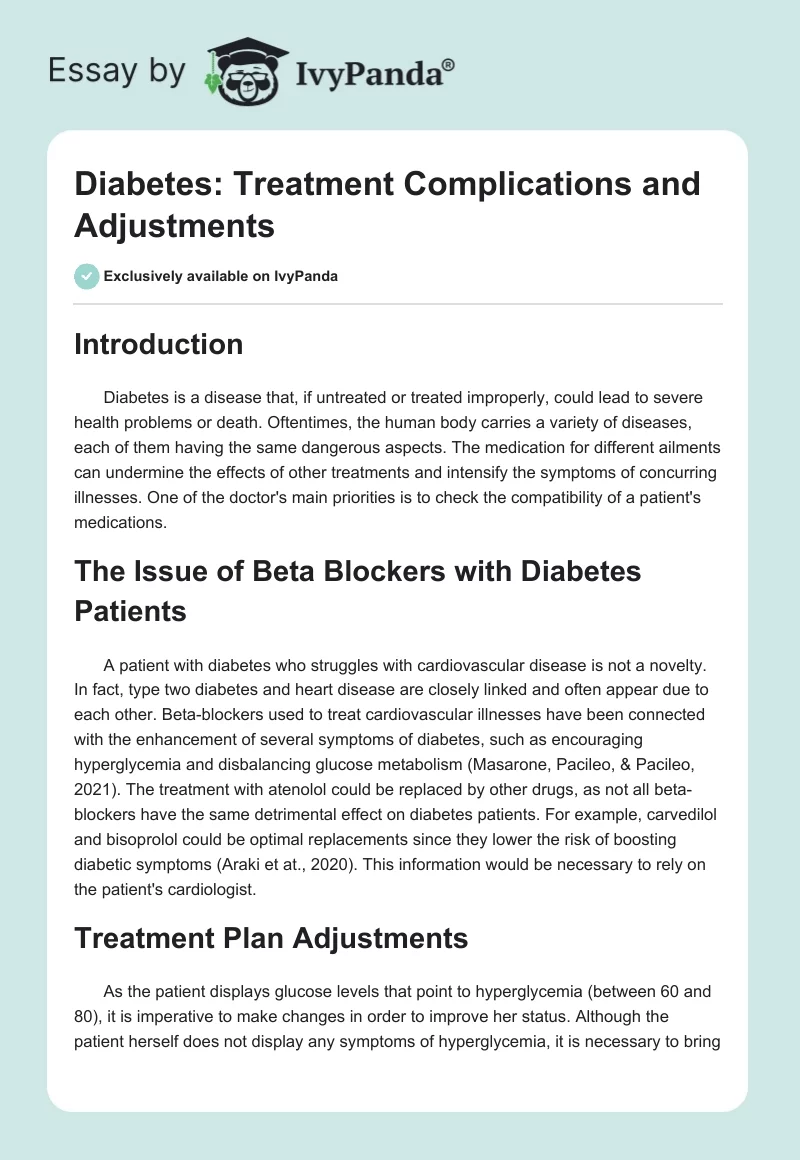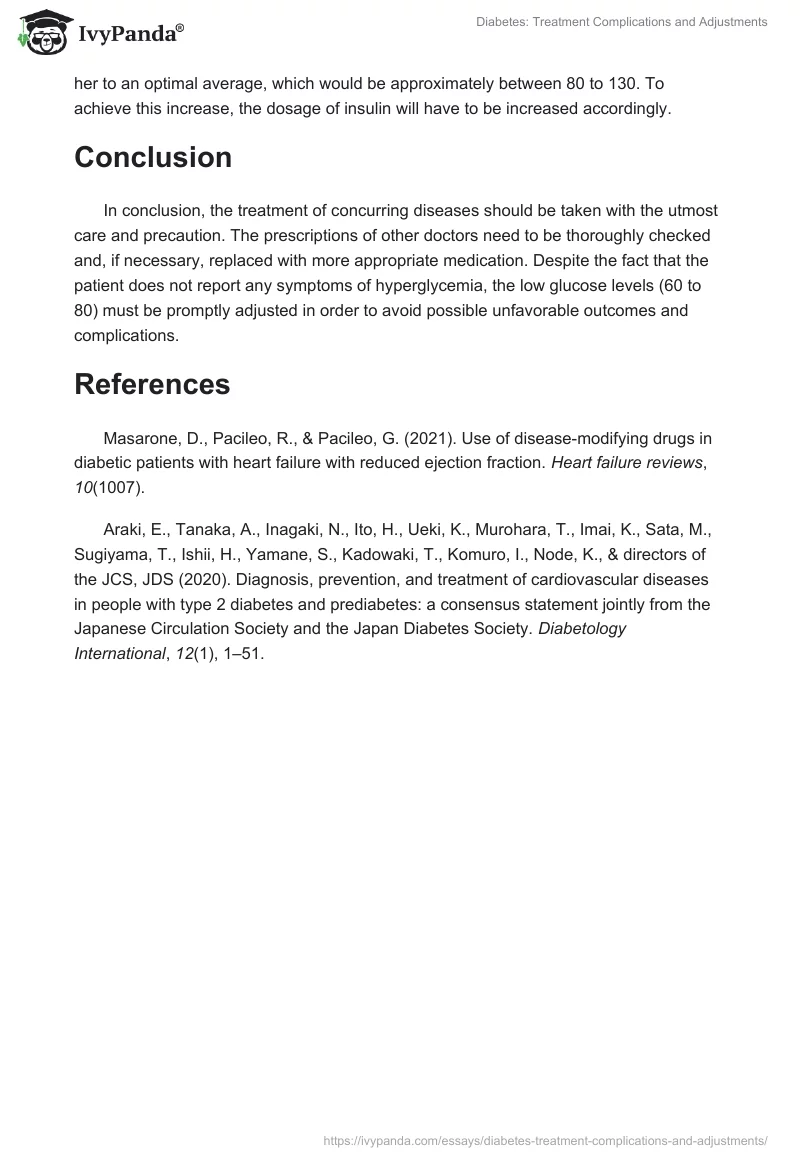Introduction
Diabetes is a disease that, if untreated or treated improperly, could lead to severe health problems or death. Oftentimes, the human body carries a variety of diseases, each of them having the same dangerous aspects. The medication for different ailments can undermine the effects of other treatments and intensify the symptoms of concurring illnesses. One of the doctor’s main priorities is to check the compatibility of a patient’s medications.
The Issue of Beta Blockers with Diabetes Patients
A patient with diabetes who struggles with cardiovascular disease is not a novelty. In fact, type two diabetes and heart disease are closely linked and often appear due to each other. Beta-blockers used to treat cardiovascular illnesses have been connected with the enhancement of several symptoms of diabetes, such as encouraging hyperglycemia and disbalancing glucose metabolism (Masarone, Pacileo, & Pacileo, 2021). The treatment with atenolol could be replaced by other drugs, as not all beta-blockers have the same detrimental effect on diabetes patients. For example, carvedilol and bisoprolol could be optimal replacements since they lower the risk of boosting diabetic symptoms (Araki et at., 2020). This information would be necessary to rely on the patient’s cardiologist.
Treatment Plan Adjustments
As the patient displays glucose levels that point to hyperglycemia (between 60 and 80), it is imperative to make changes in order to improve her status. Although the patient herself does not display any symptoms of hyperglycemia, it is necessary to bring her to an optimal average, which would be approximately between 80 to 130. To achieve this increase, the dosage of insulin will have to be increased accordingly.
Conclusion
In conclusion, the treatment of concurring diseases should be taken with the utmost care and precaution. The prescriptions of other doctors need to be thoroughly checked and, if necessary, replaced with more appropriate medication. Despite the fact that the patient does not report any symptoms of hyperglycemia, the low glucose levels (60 to 80) must be promptly adjusted in order to avoid possible unfavorable outcomes and complications.
References
Masarone, D., Pacileo, R., & Pacileo, G. (2021). Use of disease-modifying drugs in diabetic patients with heart failure with reduced ejection fraction. Heart failure reviews, 10(1007).
Araki, E., Tanaka, A., Inagaki, N., Ito, H., Ueki, K., Murohara, T., Imai, K., Sata, M., Sugiyama, T., Ishii, H., Yamane, S., Kadowaki, T., Komuro, I., Node, K., & directors of the JCS, JDS (2020). Diagnosis, prevention, and treatment of cardiovascular diseases in people with type 2 diabetes and prediabetes: a consensus statement jointly from the Japanese Circulation Society and the Japan Diabetes Society. Diabetology International, 12(1), 1–51.


